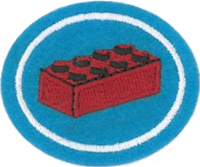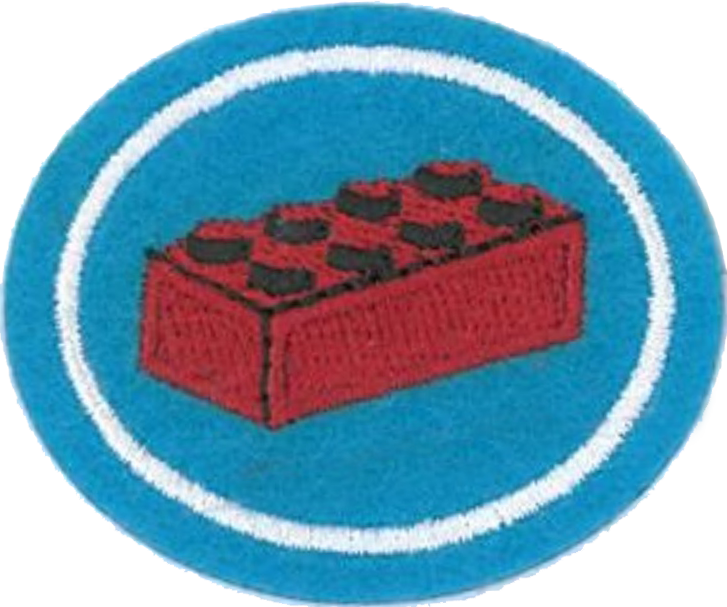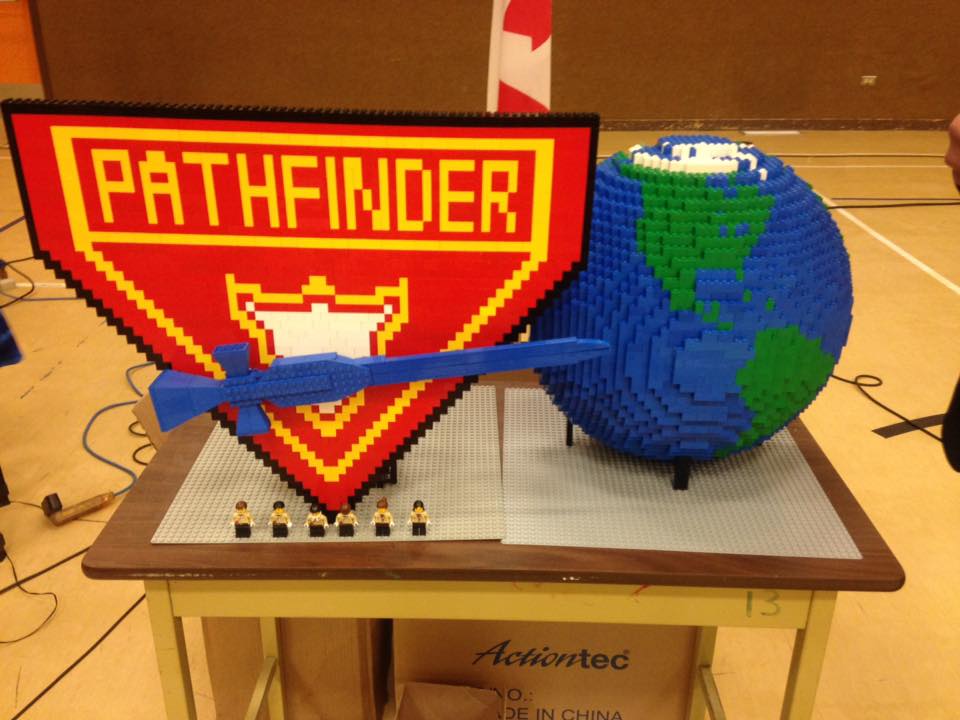Difference between revisions of "AY Honors/LEGO® Design/Answer Key 2"
(2d not used by the NAD) |
|||
| Line 10: | Line 10: | ||
{{ansreq|page={{#var:reqpage}}|num=1a}} | {{ansreq|page={{#var:reqpage}}|num=1a}} | ||
<noinclude><translate></noinclude> | <noinclude><translate></noinclude> | ||
| − | + | Any item made by LEGO. For example: Bricks, plates, tiles, all minfigure parts and accessories. | |
<noinclude></translate></noinclude> | <noinclude></translate></noinclude> | ||
{{CloseReq}} <!-- 1a --> | {{CloseReq}} <!-- 1a --> | ||
| Line 16: | Line 16: | ||
{{ansreq|page={{#var:reqpage}}|num=1b}} | {{ansreq|page={{#var:reqpage}}|num=1b}} | ||
<noinclude><translate></noinclude> | <noinclude><translate></noinclude> | ||
| − | + | The round connection point on top of a standard brick. | |
<noinclude></translate></noinclude> | <noinclude></translate></noinclude> | ||
{{CloseReq}} <!-- 1b --> | {{CloseReq}} <!-- 1b --> | ||
| Line 22: | Line 22: | ||
{{ansreq|page={{#var:reqpage}}|num=1c}} | {{ansreq|page={{#var:reqpage}}|num=1c}} | ||
<noinclude><translate></noinclude> | <noinclude><translate></noinclude> | ||
| − | + | A standard plastic element. Usually 6 sided (including top and bottom) and ranging in widths and lengths between 1 and 16 studs. | |
<noinclude></translate></noinclude> | <noinclude></translate></noinclude> | ||
{{CloseReq}} <!-- 1c --> | {{CloseReq}} <!-- 1c --> | ||
{{ansreq|page={{#var:reqpage}}|num=1d}} | {{ansreq|page={{#var:reqpage}}|num=1d}} | ||
<noinclude><translate></noinclude> | <noinclude><translate></noinclude> | ||
| + | A flat plastic element. One third the height of a brick element. | ||
<noinclude></translate></noinclude> | <noinclude></translate></noinclude> | ||
{{CloseReq}} <!-- 1d --> | {{CloseReq}} <!-- 1d --> | ||
{{ansreq|page={{#var:reqpage}}|num=1e}} | {{ansreq|page={{#var:reqpage}}|num=1e}} | ||
<noinclude><translate></noinclude> | <noinclude><translate></noinclude> | ||
| + | A flat plastic element with no attachment points on the bottom and thinner than a standard plate. | ||
<noinclude></translate></noinclude> | <noinclude></translate></noinclude> | ||
{{CloseReq}} <!-- 1e --> | {{CloseReq}} <!-- 1e --> | ||
{{ansreq|page={{#var:reqpage}}|num=1f}} | {{ansreq|page={{#var:reqpage}}|num=1f}} | ||
<noinclude><translate></noinclude> | <noinclude><translate></noinclude> | ||
| + | Similar to a plate however with no attachment points or studs on top. | ||
<noinclude></translate></noinclude> | <noinclude></translate></noinclude> | ||
{{CloseReq}} <!-- 1f --> | {{CloseReq}} <!-- 1f --> | ||
{{ansreq|page={{#var:reqpage}}|num=1g}} | {{ansreq|page={{#var:reqpage}}|num=1g}} | ||
<noinclude><translate></noinclude> | <noinclude><translate></noinclude> | ||
| + | A brick that has been modified to have a downward incline. The top of the brick has fewer connection points than the bottom of the brick. | ||
<noinclude></translate></noinclude> | <noinclude></translate></noinclude> | ||
{{CloseReq}} <!-- 1g --> | {{CloseReq}} <!-- 1g --> | ||
{{ansreq|page={{#var:reqpage}}|num=1h}} | {{ansreq|page={{#var:reqpage}}|num=1h}} | ||
<noinclude><translate></noinclude> | <noinclude><translate></noinclude> | ||
| + | A brick that has been modified to have an upward incline. The top of the brick has more connection points than the bottom of the brick. | ||
<noinclude></translate></noinclude> | <noinclude></translate></noinclude> | ||
{{CloseReq}} <!-- 1h --> | {{CloseReq}} <!-- 1h --> | ||
{{ansreq|page={{#var:reqpage}}|num=1i}} | {{ansreq|page={{#var:reqpage}}|num=1i}} | ||
<noinclude><translate></noinclude> | <noinclude><translate></noinclude> | ||
| + | One or more elements that are combined to allow connected pieces to move in any range of motion. | ||
<noinclude></translate></noinclude> | <noinclude></translate></noinclude> | ||
{{CloseReq}} <!-- 1i --> | {{CloseReq}} <!-- 1i --> | ||
{{ansreq|page={{#var:reqpage}}|num=1j}} | {{ansreq|page={{#var:reqpage}}|num=1j}} | ||
<noinclude><translate></noinclude> | <noinclude><translate></noinclude> | ||
| + | Specialized elements that are designed to connect with axles and pins. These may or may not have standard connect points. | ||
<noinclude></translate></noinclude> | <noinclude></translate></noinclude> | ||
{{CloseReq}} <!-- 1j --> | {{CloseReq}} <!-- 1j --> | ||
{{ansreq|page={{#var:reqpage}}|num=1k}} | {{ansreq|page={{#var:reqpage}}|num=1k}} | ||
<noinclude><translate></noinclude> | <noinclude><translate></noinclude> | ||
| + | Elements that are designed to store, carry, and use electricity. For example: Battery Packs, power cords, lights, motors, remote controls, and remote control receivers. | ||
<noinclude></translate></noinclude> | <noinclude></translate></noinclude> | ||
{{CloseReq}} <!-- 1k --> | {{CloseReq}} <!-- 1k --> | ||
{{ansreq|page={{#var:reqpage}}|num=1l}} | {{ansreq|page={{#var:reqpage}}|num=1l}} | ||
<noinclude><translate></noinclude> | <noinclude><translate></noinclude> | ||
| − | + | Typically 4 elements that make up a LEGO person: 1. Hat, hair, helmet, etc.; 2. Head; 3. Torso, usually includes arms and hands; 4. Legs, usually includes waist. | |
<noinclude></translate></noinclude> | <noinclude></translate></noinclude> | ||
{{CloseReq}} <!-- 1l --> | {{CloseReq}} <!-- 1l --> | ||
Revision as of 00:59, 21 September 2021
1
1a
Any item made by LEGO. For example: Bricks, plates, tiles, all minfigure parts and accessories.
1b
The round connection point on top of a standard brick.
1c
A standard plastic element. Usually 6 sided (including top and bottom) and ranging in widths and lengths between 1 and 16 studs.
1d
A flat plastic element. One third the height of a brick element.
1e
A flat plastic element with no attachment points on the bottom and thinner than a standard plate.
1f
Similar to a plate however with no attachment points or studs on top.
1g
A brick that has been modified to have a downward incline. The top of the brick has fewer connection points than the bottom of the brick.
1h
A brick that has been modified to have an upward incline. The top of the brick has more connection points than the bottom of the brick.
1i
One or more elements that are combined to allow connected pieces to move in any range of motion.
1j
Specialized elements that are designed to connect with axles and pins. These may or may not have standard connect points.
1k
Elements that are designed to store, carry, and use electricity. For example: Battery Packs, power cords, lights, motors, remote controls, and remote control receivers.
1l
Typically 4 elements that make up a LEGO person: 1. Hat, hair, helmet, etc.; 2. Head; 3. Torso, usually includes arms and hands; 4. Legs, usually includes waist.
More information on types of parts and their actual names: Lugnet Parts Ref
2
2a
2b
2c
3
3a
3b
4
You are working on the Christian Storytelling honor right?
You could also include this as a way to communicate the "visual" requirement for many of the newer nature honors.
5
You can find some ideas on scenes to build on stories around the Bible at Brick Bible
5a
5b
5c
5d
5e
6
6a
6b
7
Stop Motion Animation using LEGO® can be a great use to show events that happened in the Bible in a cool, fun way.-->
Note
LEGO®, the LEGO® logo and the minifigure are trademarks and/or copyrights of The LEGO® Group.
Pathfinders and the Seventh-day Adventist Church are not affiliated with and/or facilitated by The LEGO® Group.



